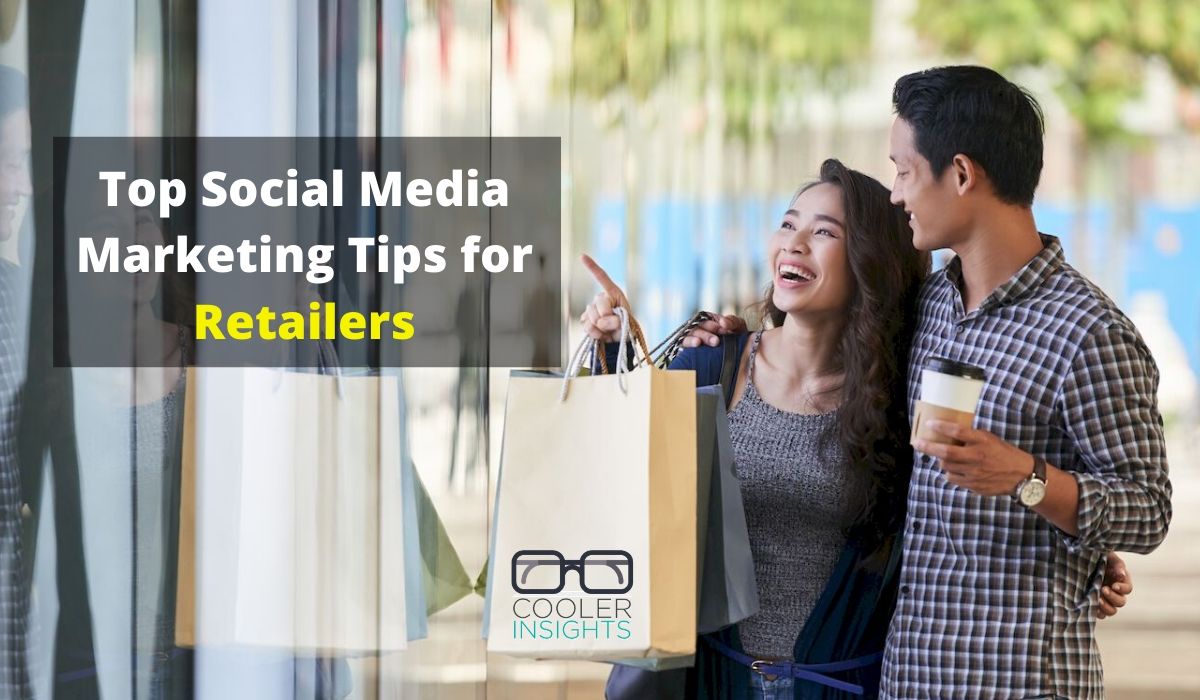
Sale photo created by pressfoto – www.freepik.com
Worried about the onslaught of online commerce on your retail shop? Struggling to pay the bills as your walk-in customers decline?
Well, you are not alone.
According to this report, more than 9,100 retail stores are closing worldwide as part of the “retail apocalypse.” They include stores from big names like Sears, Kmart, Walgreens and Barneys.
Discount shoe retailer Payless plans to file for bankruptcy, closing all 2,500 stores in what could be the largest retail liquidation in history.
The prognosis isn’t any brighter here in Singapore.
Big names like Sasa, HomeFix, MPH, and Metro have recently announced major store closures. On a year-on-year basis, retail sales in Singapore as of October 2019 declined by 4.3 percent, while data over the past 5 years from Trading Economics show that the growth rate in retail sales has dropped over the past 5 years.

Onslaught of Online Commerce
While traditional brick-and-mortar retailers bemoan the loss of income, major e-commerce players continue to rule the retail roost.
Amazon and Alibaba—the two biggest e-commerce companies in the Western and Eastern hemisphere—are aggressively expanding and buying up companies to strengthen their product offering, logistics prowess, and distribution capabilities.
E-commerce is projected to account for 14.1 percent of retail sales worldwide in 2019. Over the next five years, e-commerce sales is projected to grow to 22 percent, gobbling up market share from non e-commerce players.

Courtesy of eMarketer
Does this mean that everything has to go fully online? Not necessary.
Digitally native brands are predicted to open 850 brick-and-mortar stores in the next five years. They include e-commerce giants like Amazon and Alibaba—by opening physical ‘experience centres’, they provide omni-channel retail experiences (see the example of Disney here) that influence customer buying decisions across both online and offline touchpoints.
Against this backdrop, what can traditional retailers do?
How Retailers Can Use Social Media Marketing
As the saying goes, if you can’t beat them—join them!
While online juggernauts dominate by their size, price and distribution, smaller retailers may find it easier to forge intimate relationships with their customers.
The best way to do this is through social media marketing. Here are 10 social media strategies which retailers like you can immediately apply to grow online brand awareness, improve engagement, trigger sales, and foster brand loyalty.
#1 Craft Compelling Brand Customer Stories
Gone are the days where features and benefits alone can help to sell a product. These days, consumers buy brands whose stories resonate with their own.
Instead of shouting about how great your technology is, or how effective your product performance is, focus on your customer’s story. Demonstrate how your product fits into the lives of your customers. Show how it can make them better at whatever they do.
Make it all about them, not your product’s bells and whistles.
Case Study: Apple
While retailers all over the world are closing shop, Apple stores are popping up in prime locations around the world. Sales of Apple’s iPhones, iPads, and MacBooks continue to hold at stratospheric levels (amidst occasional blips).
The secret isn’t just in the design and technology, but in how Apple positions itself as an enabler of their customer’s life stories. It helps them to “think different,” connect with their loved ones, and do better at work (or in life) as shown in the videos below.
https://www.youtube.com/watch?v=LDeRyyDrS40
#2 Develop Insider Niche Appeal
As the saying goes: “The riches are in the niches, bitches!” And besides, this world can only have one Amazon!
If the largest online retailers in the world offers a selection as wide as a river, your goal should be to focus on a specific niche. One where you can ride on a good story (see #1 above), or tap on a niche community of insiders who share your interests.
The idea is to make your brand like one of them.
Case Study: Naiise Singapore Gifts and Souvenirs

Focused on local made-in-Singapore souvenirs and gifts, Naiise began as an online shop specialising in hard-to-find Singapore designed products back in 2013. Founded by Dennis Tay, their retail outlets (both online and offline) showcases the talents of local designers while capitalising on Singaporeans’ love for nostalgia and heritage.
Their Instagram account provides a visual showcase of their latest products and gifts, and helps to reach their community of fans.
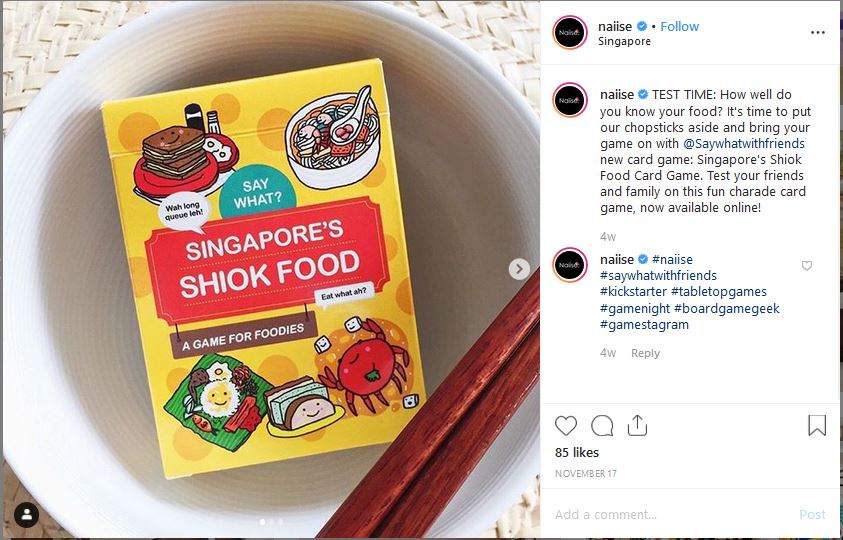
#3 Partner with Influencers—or be One!
Social media influencers are making big bucks these days, especially if you’re a Jenner or Kardashian. It isn’t uncommon for them to launch their own lines of products like cosmetics, fragrances, clothes or even hamburgers.
To expand your retail reach, there are two strategies you can adopt:
- Work with Influencer—explore co-developing merchandise in consultation with an influencer who is known for his or her good taste in your industry
- Grow Brand Influence—alternatively, you can find ways to grow your social media influence, by establishing your brand as a thought leader
Case Study: Nordstrom
Famed for its legendary customer service, Nordstrom is a high-end department store in the US that has successfully expanded into the online retail market, becoming a truly omni-channel retailer.
One of the strategies of the brand is to partner with influencers like Arielle Charnas of Something Navy. When the company gave Charnas (1.2 million followers) a standalone Something Navy Line, demand was so good that it crashed the Nordstrom website on launch day!
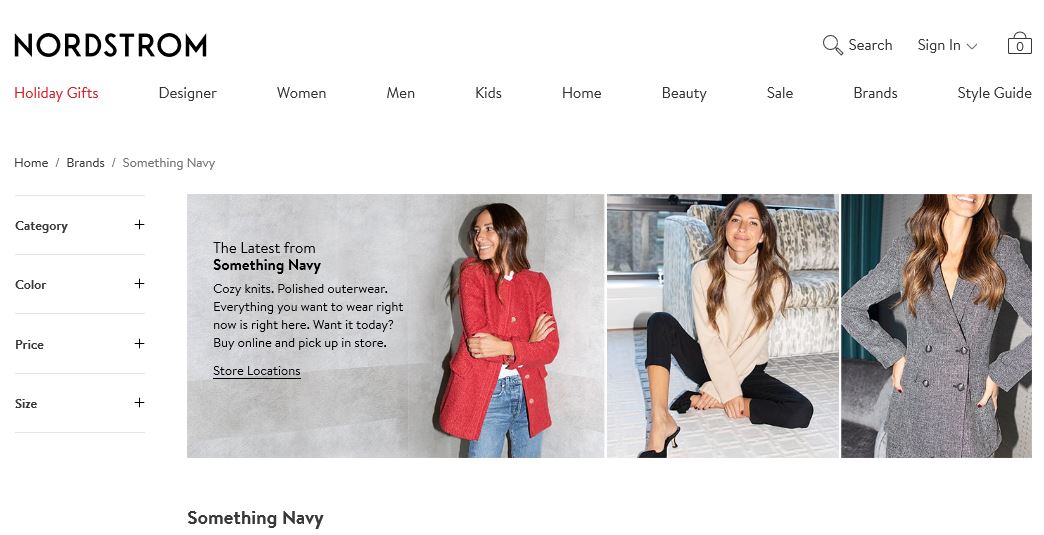
Courtesy of Nordstrom
#4 Start a Social Movement
In the digital and social age, consumers no longer just buy products and services. Rather, they’re looking for brands which stand for something more than just pure profits and revenue.
This should also move beyond having the latest technological features—or if they do, the technology would be wrapped around a greater cause (eg humanising communications).
Case Study: Ben & Jerry’s
Ben & Jerry’s isn’t just an ice-cream manufacturer and retailer. What sets them apart from other brands are their values which “aims to create linked prosperity for everyone that’s connected to our business: suppliers, employees, farmers, franchisees, customers, and neighbors alike.”
This is embodied by their three-part mission as shown below…

As well as the causes that they support as an organisation, as shown below:

#5 Build a Community
You can’t build a brand without a community of loyal supporters. While cult brands like Apple have their own devoted following, retail companies like Nordstrom have also grown their own base of followers.
In building an online community, it is useful to consider the four stages of growing an online community:
- Recruit: How to grow your online followers
- Engage: What is the best way to engage them online (and offline)
- Sustain: How do you keep their interest going for the long-term (without burning yourself out)
- Advocate: What can you do to foster brand advocacy and social sharing
Case Study: Lululemon
Founded in 1998 as a retailer of yoga pants and other yoga wear, Lululemon has grown to over 460 stores around the world plus an active online store. It focuses not just on its products but on building its community of Yoga and Pilates loving ladies.
Lululemon collaborates with yoga teachers and fitness professionals to host classes at its stores. It encourages its customers to use the hashtag #TheSweatLife in their posts, and harvests such User Generated Content (UGC) on their own Instagram account. Lululemon’s Ambassador programme also singles out fitness professionals who are micro-influencers in their own communities.

Courtesy of Lululemon SG Instagram
#6 Provide Instagrammable Retail Moments
By working with its community of ambassadors and members, Lululemon could harness the power of the crowd. This is a useful strategy to source for Instagrammable photos and videos that feature real customers—a major plus for any brand online.
The other strategy for retailers to be tagged and shared on Facebook, Instagram or Twitter is to create and curate Instagrammable moments. This can be anything from creating an Instagram-worthy wall, organising eye-candy events, to developing products that are worthy of photographing.
Case Study: Gentle Monster

Hip and trendy Korean eye-wear brand Gentle Monster isn’t quite the same as Japanese stalwart Own Days. Famed for its fashionable spectacles and sun-glasses, Gentle Monster’s stores around the world are an entire experience in themselves. Have a look at how they are designed, and compare them to your neighbourhood optician!
Here’s a photo of their store in Shanghai, which looks like a contemporary art-installation.

#7 Amplify with Online Ads
I know I know. Money is hard to earn. And if you’re bleeding red ink, the last thing you want to do is to spend money on ads.
But you can’t possibly avoid investing some funds in Facebook, Instagram or YouTube ads if you wish to reach your target audience of Millennials or Gen-Z teens. Besides, all the online retailers are advertising extensively on social media to build brand awareness and boost sales.
(Learn the 7 building blocks of great Facebook ads here.)
Case Study: Zalora
Zalora is the leading fashion e-commerce retailer in South East Asia, with significant presences across all the regional markets. As an online mall, Zalora carries multiple top fashion brands on its website—from Top Shop, Cotton On, Mango, and Adidas to Dorothy Perkins and Laneige.
What you may not know about Zalora is that it advertises on Facebook—a lot! In fact, at the point of this writing, its Ad Library featured over 100 different ads with multiple versions running in Singapore alone. From 12.12 promotions to new product launches to seasonal specials, there is an ad for almost every product type or category imaginable.
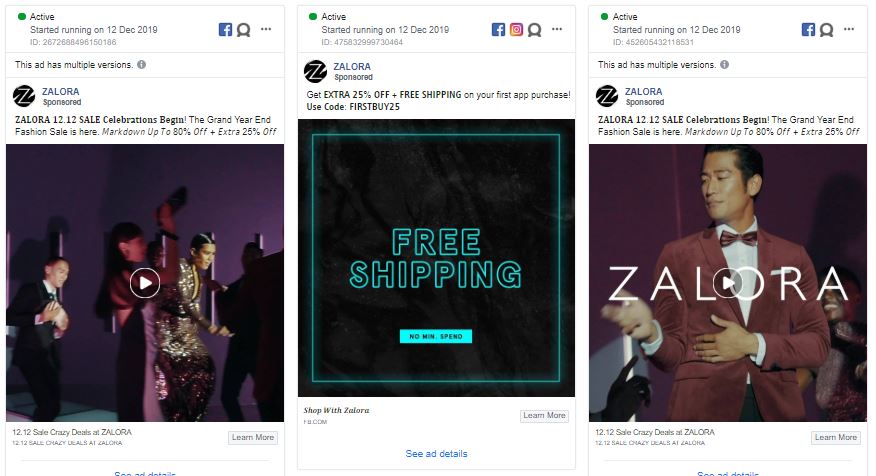
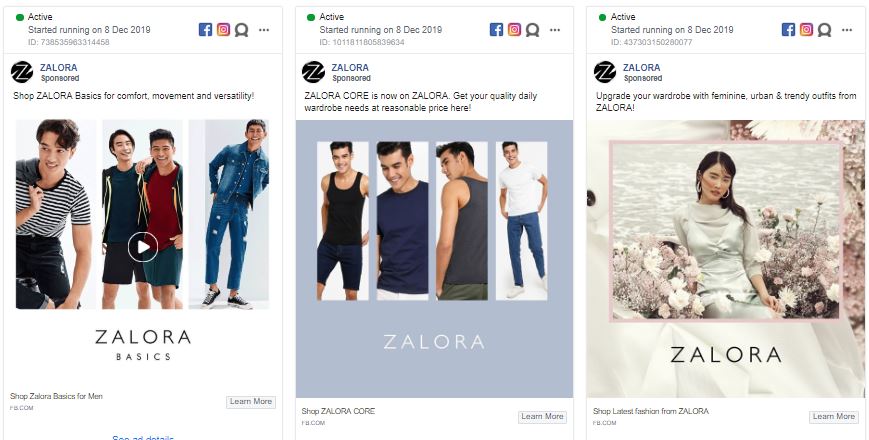
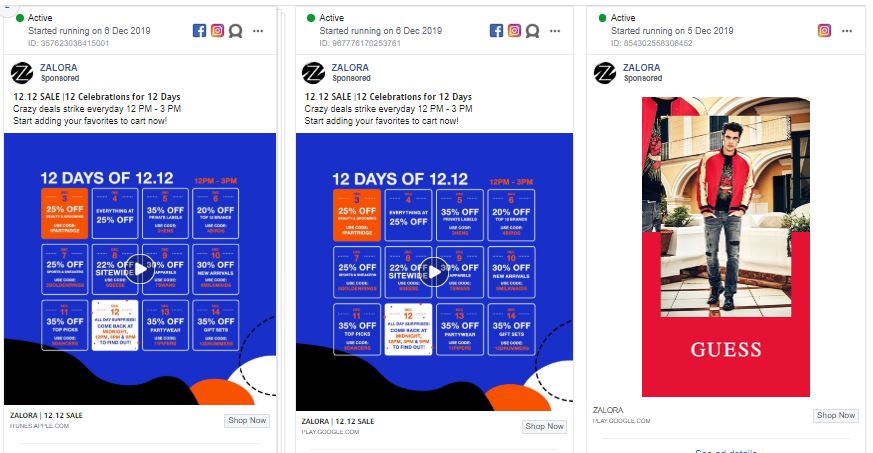
#8 Ride on Trending Topics
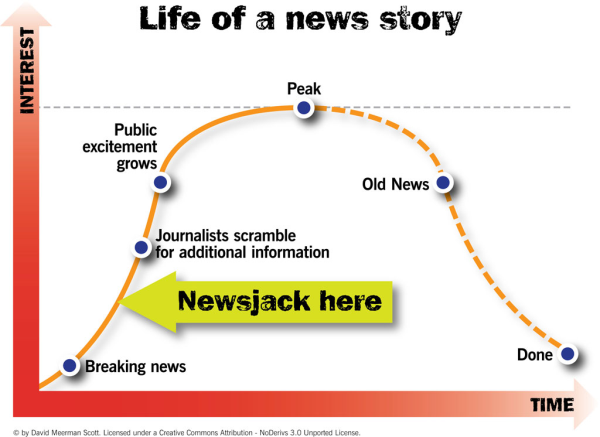
Courtesy of David Meerman Scott
If you haven’t already heard of the strategy “newsjacking” (or trendjacking), here’s a quick definition from its originator David Meerman Scott:
“..the process by which you inject your ideas or angles into breaking news, in real-time, in order to generate media coverage for yourself or your business.”
One of the most oft-used strategies in social media marketing, newsjacking allows you to achieve a phenomenally quick growth in web visitorship and views riding on a hot news item.
Case Study: Ikea
Everybody knows that Ikea sells amazing food (their Swedish meatballs and chicken wings are legendary), but did you know that huge stalwart of furniture retailing is also a kickass social media marketer?
What I love about Ikea is their ability to quickly tap on trends to create a quirky (and viral) piece of campaign content, riding on anything from television shows, hot news items, to celebrity shenanigans.
Here are some examples below taken from their Facebook Page.
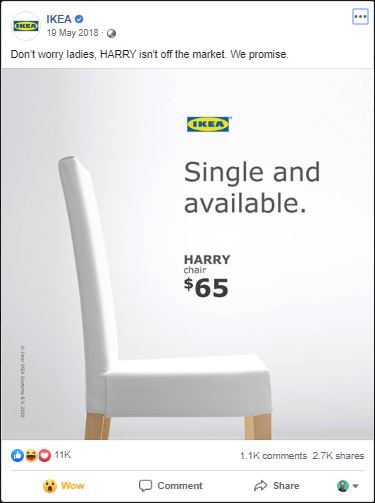
When Prince Harry got married to Meghan Markle…

During the Game of Thrones season…
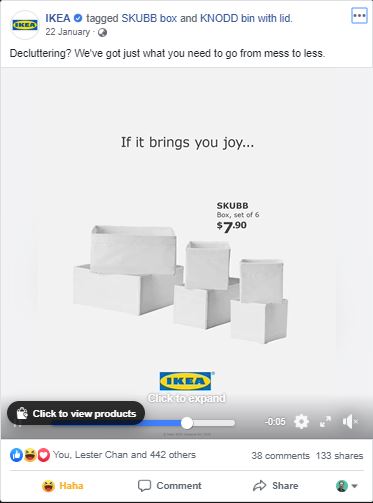
When Marie Kondo was still “sparking joy”…
#9 Teach and Help Your Customers
Can retailers be educators? Yes you can! And what better way to help your customers than to teach them how to solve their problems or improve their quality of life in your related domain.
This can be anything from teaching them how to cook better if you sell kitchen appliances, clean better if you sell household detergents, to groom themselves better if you sell toiletries. And let’s not forget all those pesky electronic equipment which can give both Uncle Bob and you a nightmare.
Case Study: Best Buy
Best Buy is an American multinational consumer electronics retailer, but it doesn’t just sell you ovens, television sets, and computers. According to their website, they grow their mission “…by solving technology problems and addressing key human needs across a range of areas, including entertainment, productivity, communication, food, security and health.”
What I love about Best Buy is their amazing YouTube Channel, which includes videos that can help consumers solve all kinds of household electronics issues—from fixing their Wifi, setting up their Smart TV, to using an air fryer.
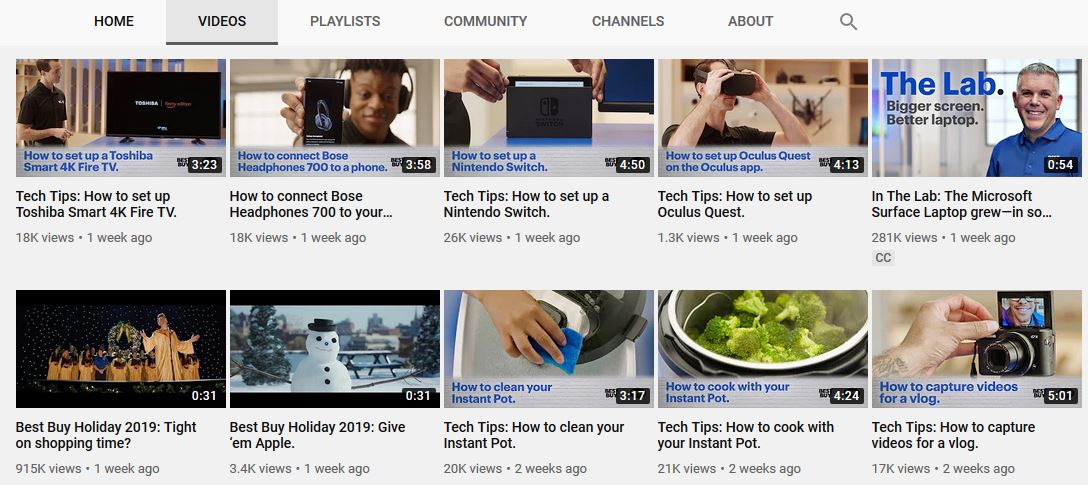
#10 Provide Exceptional Customer Experience
Finally, and certainly most importantly, retailers need to create an experience that your customers will rave about.
This means no more sulky sales assistants (or over-enthusiastic ones that scare the bejesus out of them), easy to navigate store layouts, and a returns policy that reduces virtually all risk from your customers.
And let’s not forget about your website and your social media channels too—we’re talking about the way you engage with your customers on Facebook, Twitter, Instagram, YouTube, LinkedIn, Pinterest, or anywhere else.
Case Study: Zappos
You can’t talk about “Wow” customer service without mentioning Zappos. The online retailer of shoes and other apparel not only offers free overnight shipping (for US customers) if available—they also have a 365-day return policy!
That’s not all, their responsiveness on social media is legendary. Don’t believe me? Have a look at how quickly they responded to comments (and how friendly their banter) on their Facebook page below.

Conclusion
Phew! That was quite a bit to go through but you made it to the end.
Owning or managing a retail shop is tough. At times, the competition seems overwhelming—especially from the 800-pound online gorillas.
By adopting these 10 social media marketing strategies, you will be able to help your retail business to survive and more importantly thrive in the digital and social age. This will prepare you to embrace the 2020s with confidence and swagger!

One Comment